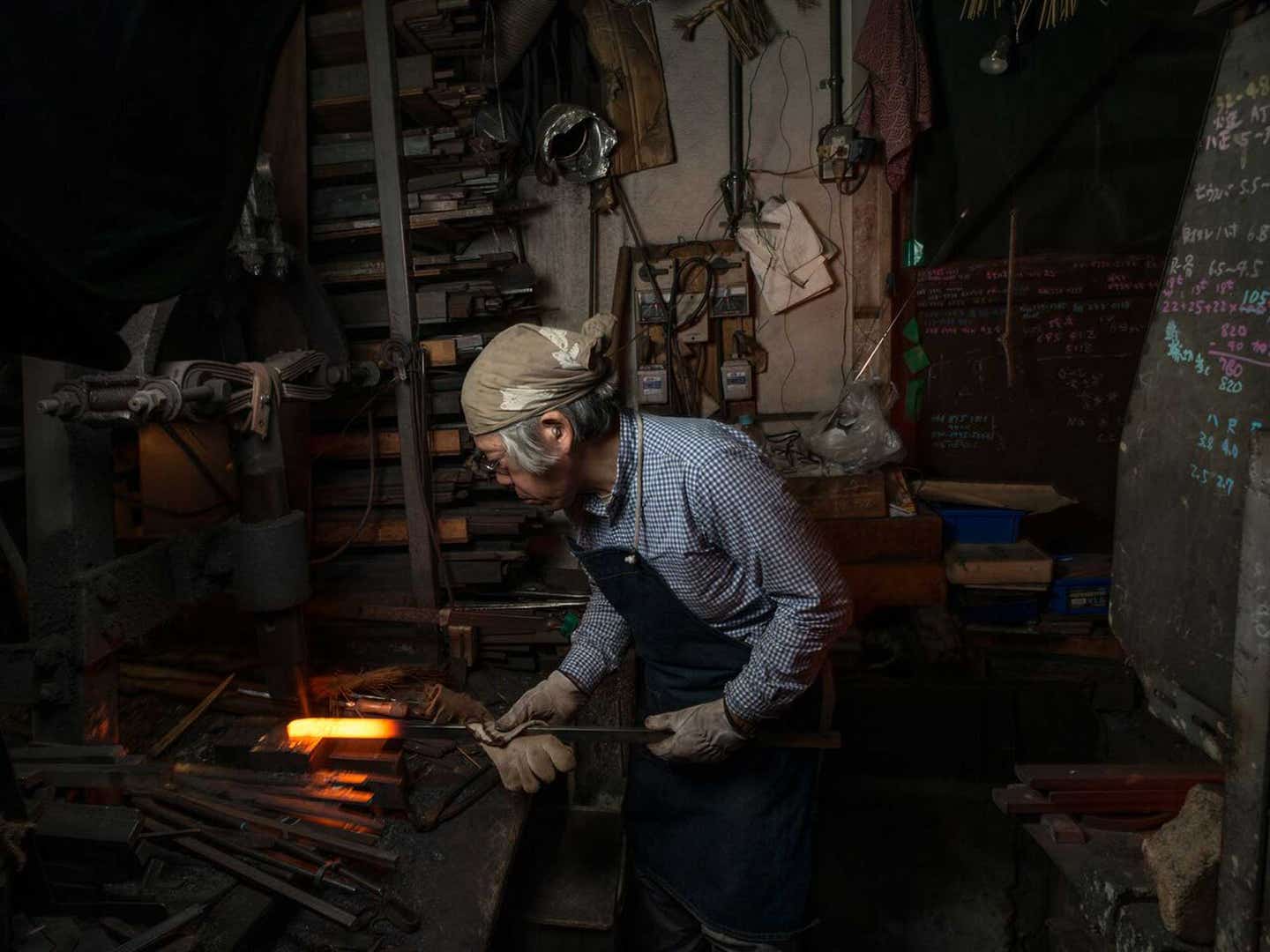
Japan’s Centuries-Old Art of Making Some of the World’s Best Knives
Photographer Michael Magers captures the ancient craft of the shokunin
With their razor-sharp edges and unmatched elegance, Japanese knives are some of the best in the world. And in Sakai, craftsmen, or shokunin, have been making them for hundreds of years.
Sakai's reputation for blades dates back to the 14th century, when shokunin forged katanas for samuari. Those old practices have directly translated to how craftsmen make cooking knives today. "Instead of one guy doing everything, there are several areas of expertise and a different Shokunin for each," says Michael Magers, a Dallas-born, New York-based photographer who's been documenting shokunin in Japan since 2012. "Segmenting allows a second level of refinement," Magers says. "If you're just forging, or sharpening, you're really good at it and have a strong understanding of that specific craft."
Magers' love of Japanese knives didn't begin in a workshop or kitchen, but rather with a life-changing cup of coffee at a Japanese cafe. "It took the guy 20 minutes to make it," Magers says. It was during his first trip to Japan, and the coffee was his introduction to the attention to detail that defines Japanese craft. "What I realized then and there was that, in the West, we have the relationship between speed and quality all wrong." That coffee sent Magers on a quest to learn more about this relationship, and he does so by making repeat trips to Japan and photographing the shokunin responsible for maintaining some of the country's oldest crafts. "I got really interested in understanding craft and seeing how beautiful hand-crafted goods are," he says, "because handmade goods have a heartbeat and a piece of their creator in them."
Sakai is a smaller, more residential prefecture 20 kilometers south of Osaka, the perfect place for these shokunin to "toil in obscurity," Magers says. There he met four shokunin who've made knives for chefs around the world like David Bouley and Michael Romano, each craftsman in his 60s or 70s with their own personal "factories" devoted to different stages of the knife-making process: forging, shaping, sharpening, and finishing the blades.
"When I heard 'factory' I pictured groups of people and a mass production model." He found the polar opposite. The first factory was a "tiny garage in the back of a house," Magers remembers. It belonged to Yoshikazu Ikeda, the blacksmith who begins the knives. "The blacksmith is an incredibly rare skill," says Magers. "They have to fold together high carbon steel and soft ferrite in forges that put out temperatures up to 1,000 degrees Celsius."
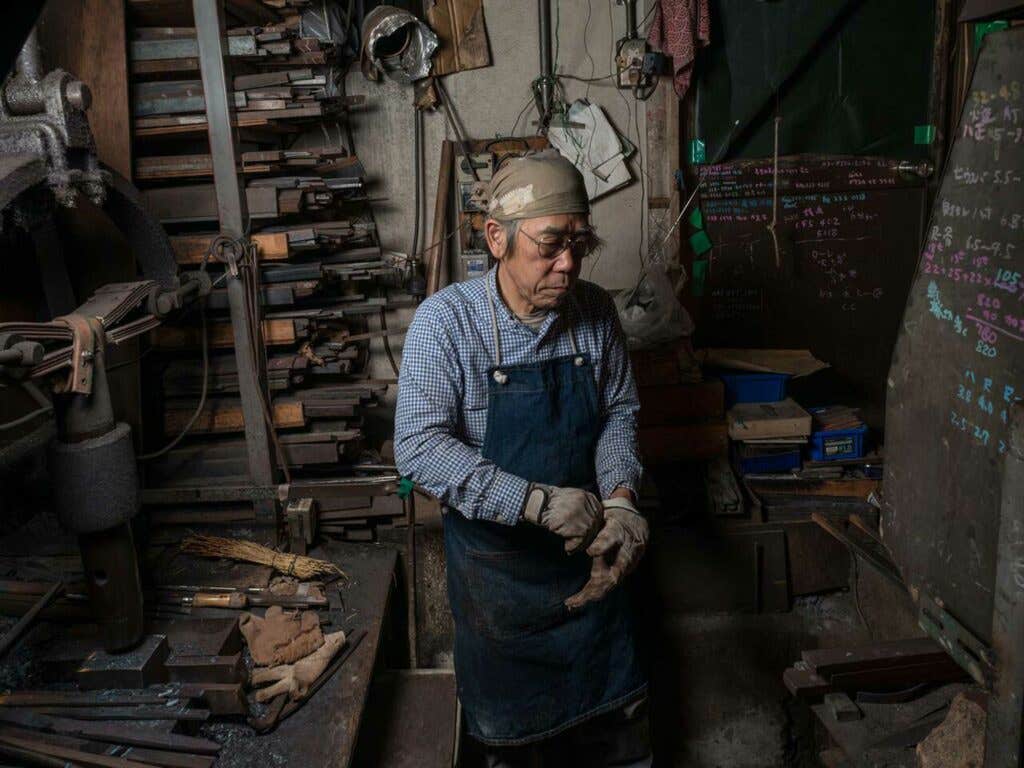
"There wasn't enough room for me with a translator and camera equipment," Magers remembers of the small space—dark and cramped—where nothing seemed changed for centuries save for the electric press Ikeda now uses. With steel hot from the forge, Ikeda uses the press for the initial forming of the blade, and he manually hammers it to further the process. From there, the rough steel is taken up the street to Shunichi Tahara, who shapes the blade.
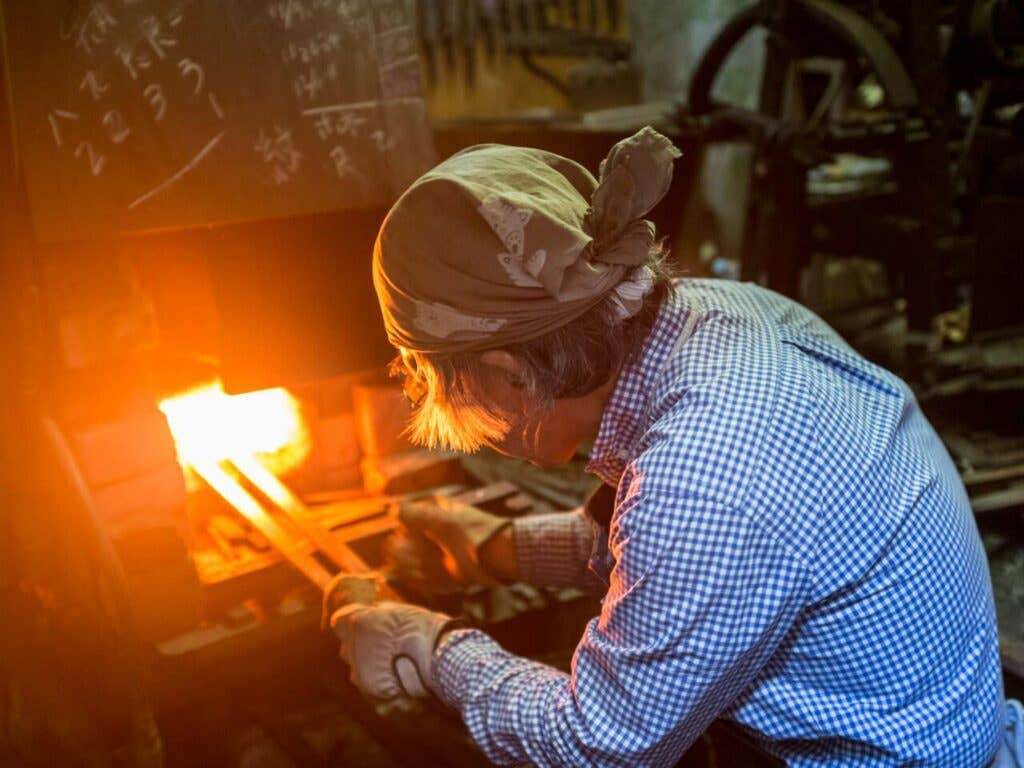
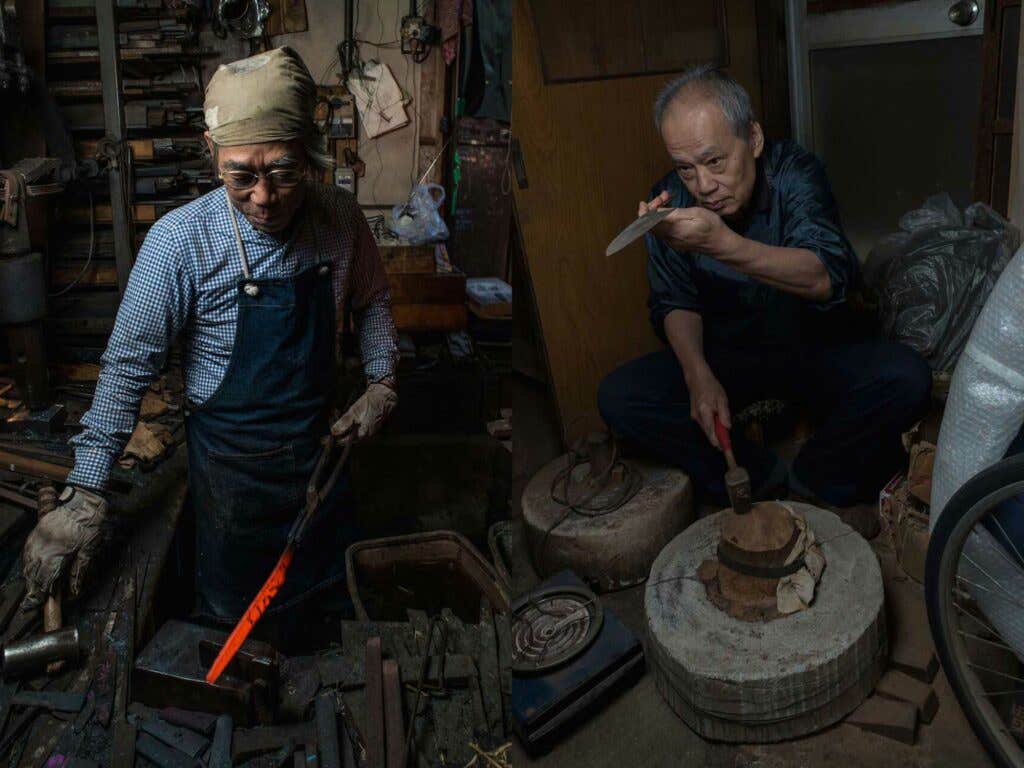
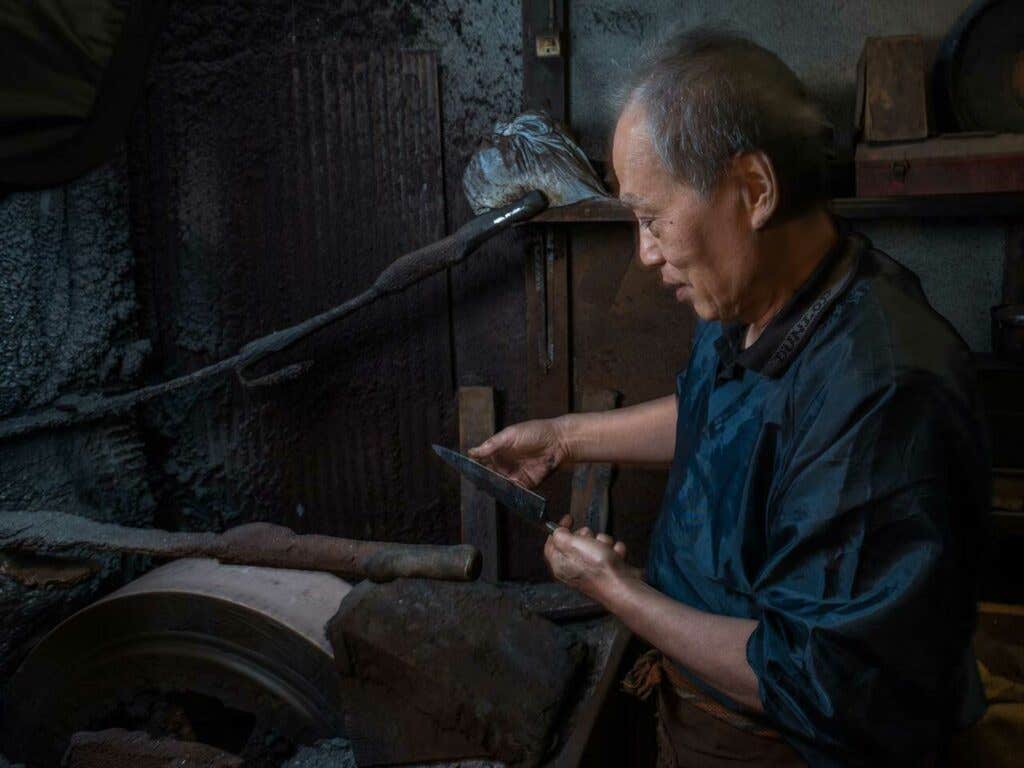
Tahara's own factory, also small and cluttered, doesn't have any modern machinery. "He uses an ox bone grinder for part of the shaping process," Magers says, "and he powers it with an intricate system of belt-driven motors." Next, a short drive away is Koichi Morimoto, who, in his early 70s, is one of the eldest knife shokunin. Barefoot, he uses a wet stone for the final phase of sharpening before the blade is sent to Susumu Wakai, the finisher. "Wakai sits like a Buddha all day long and attaches handles to blades," Magers says. The final step is to engrave the blade.
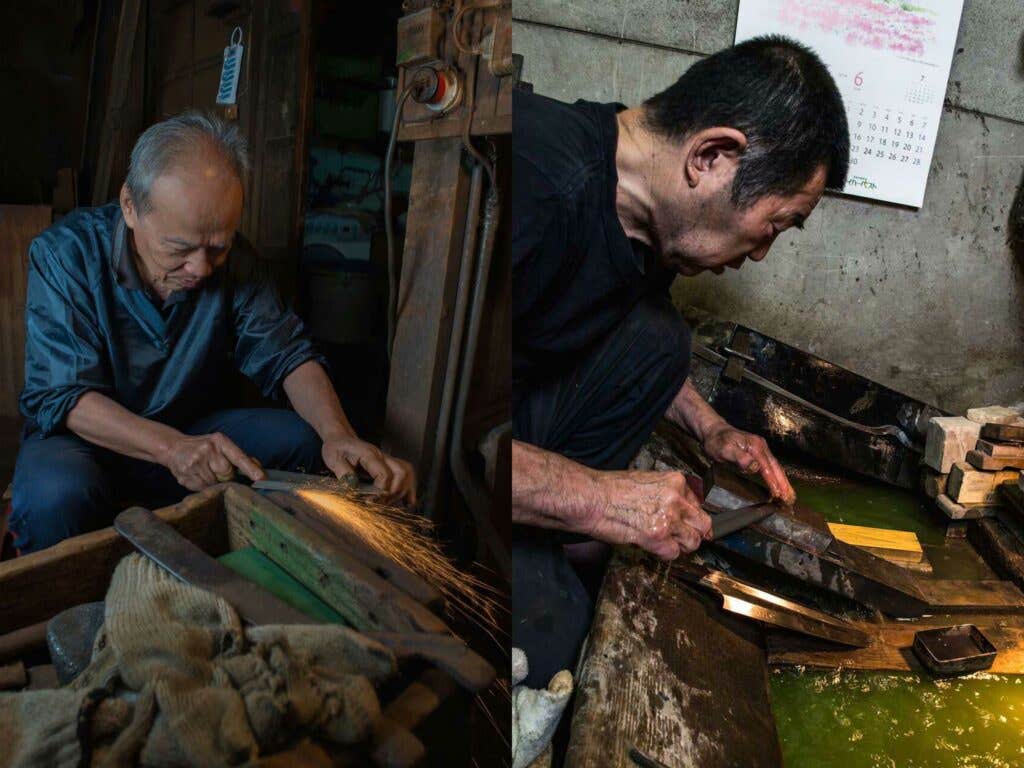

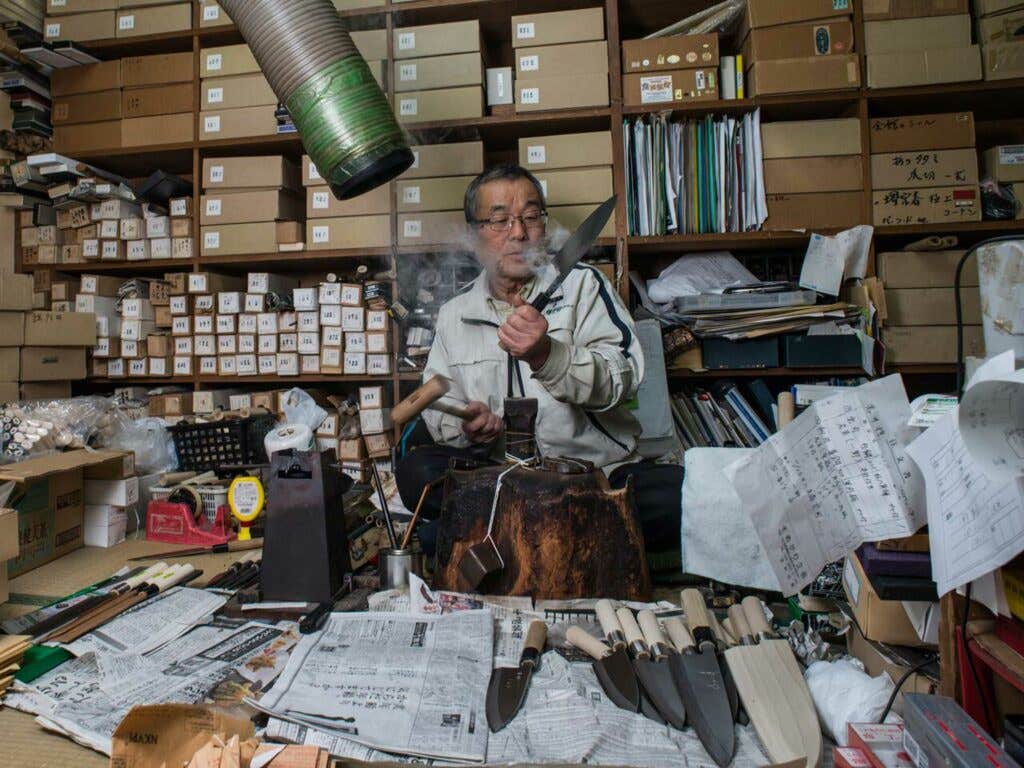
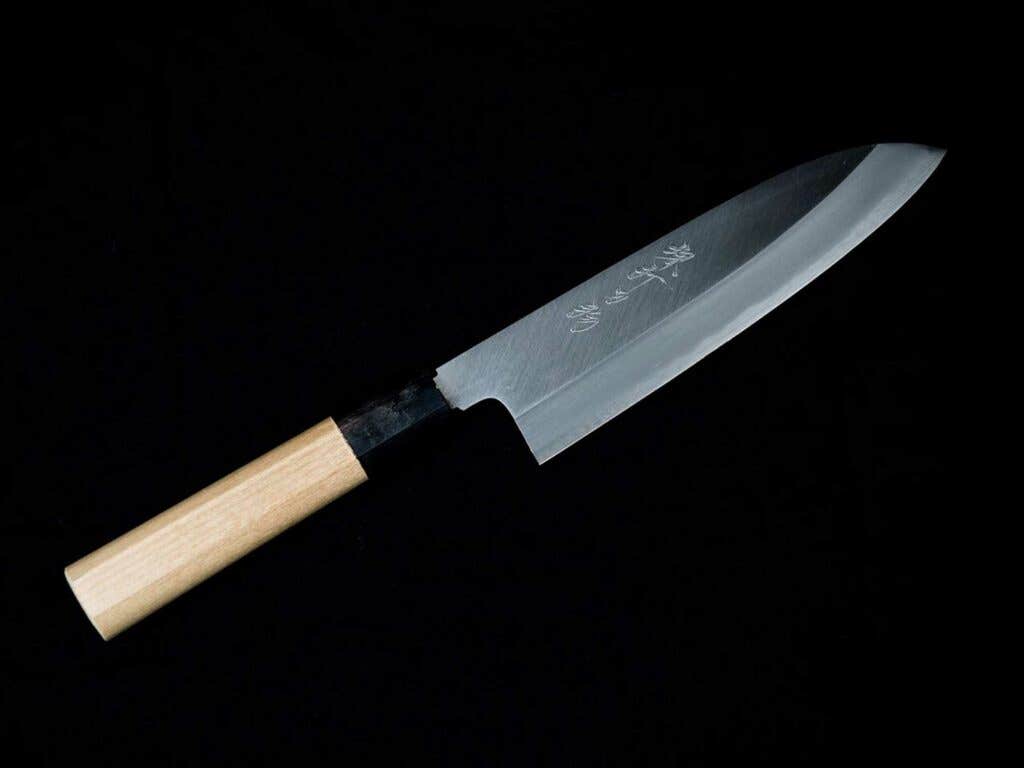
Sakai's knife-making future is in question. It takes years to master these techniques, and these shokunin are in their mid-60s without apprentices. "It may take ten years to get technique, but it takes a lifetime to understand how to be creative with it," Magers says. "So younger generations are not willing to dedicate so much time to something in which the learning process is really incremental."
Though that is not to say these Shokunin are blind to evolution. "They are cognizant of incorporating new things," Magers says, "but, at the same time, they are aware that change is very glacial."
Keep Reading
Continue to Next Story










